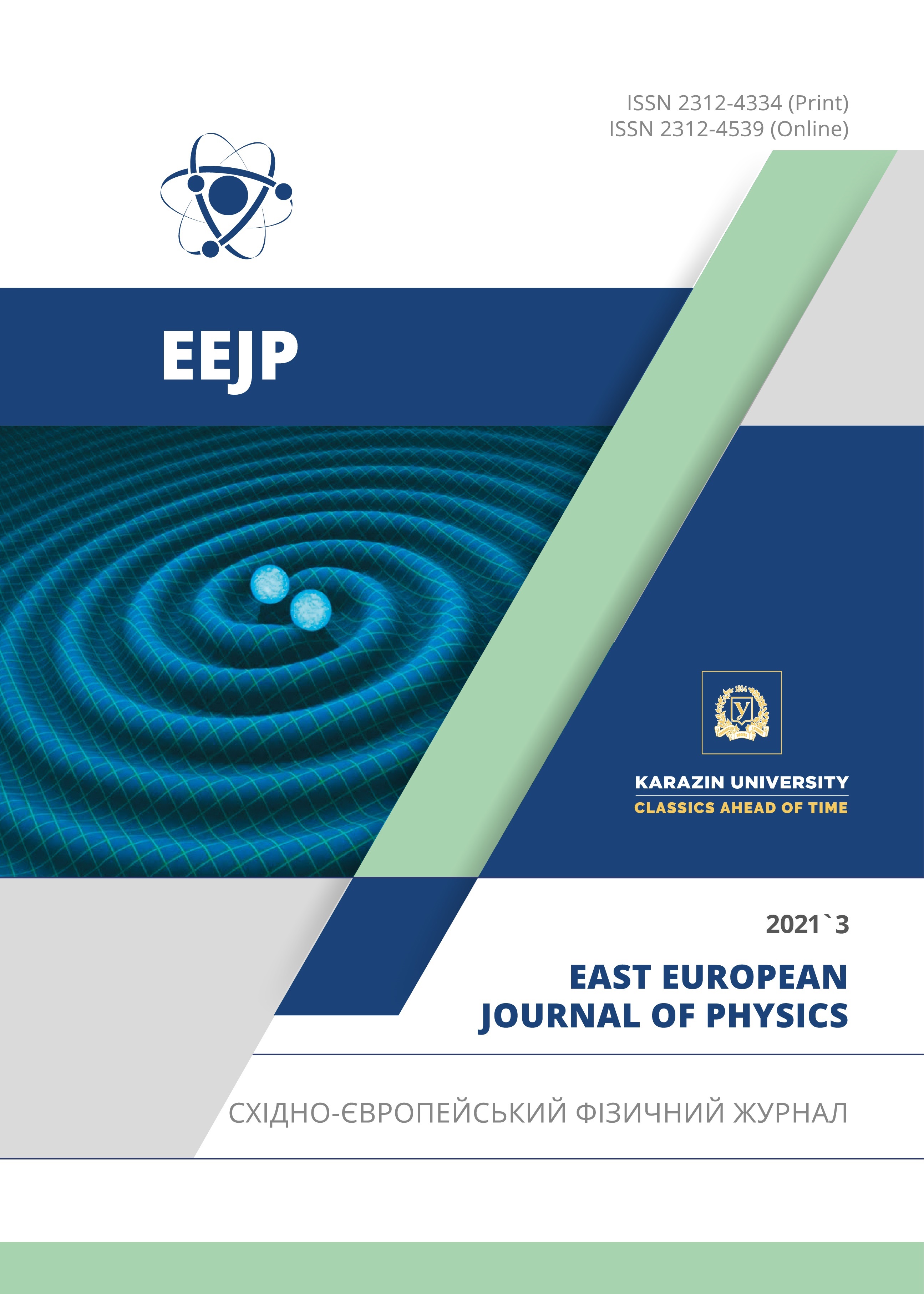Швидкі електромагнітні хвили на межі метаматеріалу: моделювання підсилення
Анотація
В статті представлено результати дослідження властивостей швидких поверхневих електромагнітних хвиль, що поширюються уздовж пласкої поверхні розділу між активним метаматеріалом та повітрям (або вакуумом). Розглянуто випадок однорідного та ізотропного метаматеріалу. Досліджено дисперсійні властивості, просторове загасання хвилі, фазову та групову швидкості, а також просторовий розподіл електромагнітного поля власних TE та TM мод такої хвилеводної структури. Показано, що в цій хвилеводній структурі можуть існувати швидкі поверхневі електромагнітні хвилі та досліджено їх властивості. Показано, що фазова швидкість ТМ-моди у кілька разів перевищує швидкість світла у вакуумі, тоді як фазова швидкість ТЕ-моди незначно перевищує швидкість світла у вакуумі. TM-мода є прямою хвилею, в якій фазова та групова швидкості однаково спрямовані. Отримано, що групова швидкість ТМ-моди змінюється від нуля до половини швидкості світла у вакуумі, та досягає мінімуму за деякого значення частоти хвилі, що залежить від характеристик метаматеріалу. Показано, що глибина проникнення ТМ-моди в метаматеріал значно менша ніж у вакуум. ТЕ-мода є зворотною хвилею, в якій фазова та групова швидкості протилежно направлені. Абсолютне значення групової швидкості ТЕ-моди приблизно в шість разів менше за швидкість світла у вакуумі. На відміну від ТМ-моди, глибина проникнення ТЕ-моди в метаматеріал значно більша, ніж у вакуум. Визначені властивості швидких поверхневих електромагнітних хвиль можуть бути використані для моделювання та проектування сучасних приладів генерації та підсилення, що містять метаматеріали.
Завантаження
Посилання
I.V. Shadrivov, M. Lapine, and Y.S. Kivshar, editors, Nonlinear, tunable and active metamaterials, (Springer, 2015), https://doi.org/10.1007/978-3-319-08386-5
S. Ramo, J.R. Whinnery, and T. Van Duzer. Fields and Waves in Communication Electronics (3rd ed.), (John Wiley & Sons, 1994), ISBN: 978-0-471-58551-0
R. Carter. Fast-Wave Devices // Microwave and RF Vacuum Electronic Power Sources (The Cambridge RF and Microwave Engineering Series), (Cambridge University Press, 2018), pp. 659-693, https://doi.org/10.1017/9780511979231.018
G.S. Nusinovich, M.K. Thumm, and M.I. Petelin, Journal of Infrared, Millimeter, and Terahertz Waves, 35, 325 (2014), https://doi.org/10.1007/s10762-014-0050-7
V.K. Galaydych, N.A. Azarenkov, V.P. Olefir, and A.E. Sporov, Problems of Atomic Science and Technology, 4, 306 (2015), https://vant.kipt.kharkov.ua/ARTICLE/VANT_2015_4/article_2015_4_306.pdf
V.K. Galaydych, N.A. Azarenkov, V.P. Olefir, and A.E. Sporov, Problems of Atomic Science and Technology, 1, 96 (2017), https://vant.kipt.kharkov.ua/ARTICLE/VANT_2017_1/article_2017_1_96.pdf
D.R. Smith, W.J. Padilla, S.C. Vier, S.C. Nemat-Nasser, and S. Schultz, Phys. Rev. Lett. 84, 4184, (2000), https://doi.org/10.1103/PhysRevLett.84.4184
R. Ruppin, Phys. Lett. A, 277, 61 (2000), https://doi.org/10.1016/S0375-9601(00)00694-0
Автори, які публікуються у цьому журналі, погоджуються з наступними умовами:
- Автори залишають за собою право на авторство своєї роботи та передають журналу право першої публікації цієї роботи на умовах ліцензії Creative Commons Attribution License, котра дозволяє іншим особам вільно розповсюджувати опубліковану роботу з обов'язковим посиланням на авторів оригінальної роботи та першу публікацію роботи у цьому журналі.
- Автори мають право укладати самостійні додаткові угоди щодо неексклюзивного розповсюдження роботи у тому вигляді, в якому вона була опублікована цим журналом (наприклад, розміщувати роботу в електронному сховищі установи або публікувати у складі монографії), за умови збереження посилання на першу публікацію роботи у цьому журналі.
- Політика журналу дозволяє і заохочує розміщення авторами в мережі Інтернет (наприклад, у сховищах установ або на особистих веб-сайтах) рукопису роботи, як до подання цього рукопису до редакції, так і під час його редакційного опрацювання, оскільки це сприяє виникненню продуктивної наукової дискусії та позитивно позначається на оперативності та динаміці цитування опублікованої роботи (див. The Effect of Open Access).








